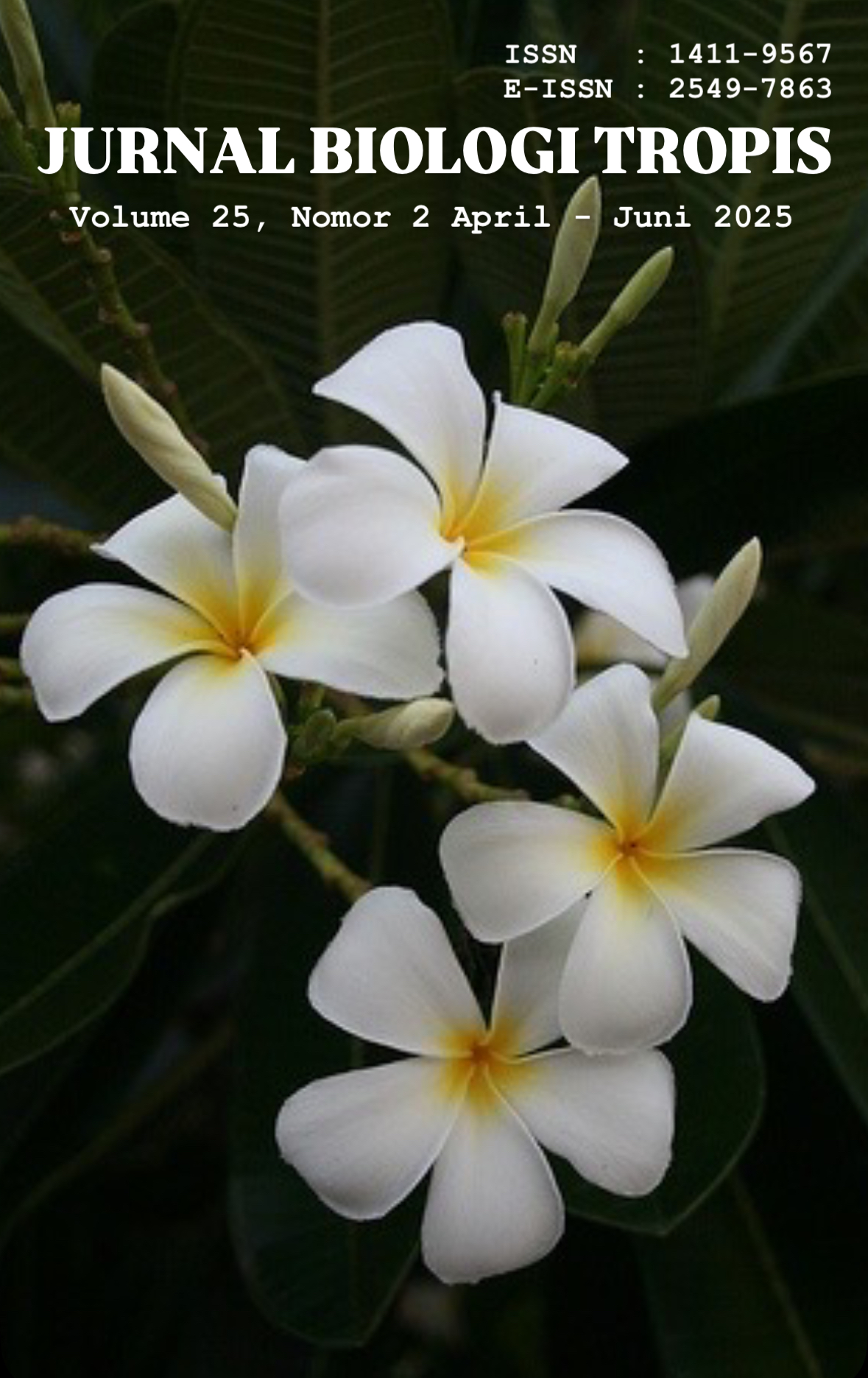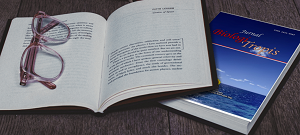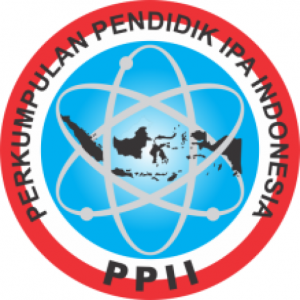The Effect of Gargling Green Meniran Decoction on Bacterial Total Plate Count in Oral Cavity
Authors
Salsabila Shafa Dhiya , Vector Stephen DewanggaDOI:
10.29303/jbt.v25i2.8876Published:
2025-05-22Issue:
Vol. 25 No. 2 (2025): April-JuniKeywords:
Chlorhexidine, green Mmeniran, gargle, Phyllanthus niruri Linn., TPC.Articles
Downloads
How to Cite
Downloads
Metrics
Abstract
Green meniran (Phyllanthus niruri Linn.) is a herb that grows wild and has antibacterial properties such as flavonoids, alkaloids, tannins, and saponins that can kill bacteria. Oral hygiene is an action to improve dental and oral hygiene, one of which is by gargling. This study is conduct to see the effect of green meniran decoction as a herbal mouthwash on the Total Plate Count (TPC) of bacteria in the oral cavity, then it will be compared with a mouthwash containing 0.2% chlorhexidine which is already known as a mouthwash that has the potential to maintain oral health. The type of research is experimental analysis using 3 groups, negative control, treatment and positive control with pre and post group design. The results of the study showed that a 100% concentration of green meniran decoction can reduce the number of bacterial colonies in the oral cavity and can be used as an alternative as a natural-based mouthwash.
References
Adrianto, A. W. D., Hartomo, B. T., & Putri, D. A. (2022). Variasi Oral microbiome Rongga Mulut Sebagai Biomarker Pada Bidang Kedokteran Gigi: Literature Review. Indonesian Journal of Dentistry, 2(1), 1. https://doi.org/10.26714/ijd.v2i1.9865
Fatima, S., Kamran, M., Muzammal, M., Rehman, A., Ullah Shah, K., Mashal, S., Ali Rustam, S., Waqar Sabir, M., & Nayab, A. (2020). Composition and Function of Saliva: A review. World Journal of Pharmacy and Pharmaceutical Sciences, 9(6), 1552–1567. https://doi.org/10.20959/wjpps20206-16334
Fitri, I. (2017). Efektivitas Antibakteri Ekstrak Herba Meniran (Phylanthus Niruni) Terhadap Pertumbuhan Bakteri Salmonella Sp. Dan Propionibacterium Acnes. JST (Jurnal Sains Dan Teknologi), 6(2), 300–310. Https://Doi.Org/10.23887/Jstundiksha.V6i2.11815
Grenvilco DO, Kumontoy, Djefry D, T. M. (2023). Vol. 16 No. 3 / Juli - September 2023. Pemanfaatan Tanaman Herbal Sebagai Obat Tradisional Untuk Kesehatan Masyarakat Di Desa Guaan Kecamatan Mooat Kabupaten Bolaang Mongondow Timur, 16(3), 1–20.
Handayani, V., & Nurfadillah, N. (2016). KAJIAN FARMAKOGNOSTIK HERBA MENIRAN HIJAU (Phyllanthus niruri L.) dan HERBA MENIRAN MERAH (Phyllanthus urinaria L.). Jurnal Fitofarmaka Indonesia, 1(1), 18–23. https://doi.org/10.33096/jffi.v1i1.196
Jannah, R., Ulfa, A., Biologi, P., Syiah, U., & Aceh, B. (2024). AUREUATCC25923 : STUDI IN VITRO. 12(1), 63–73. https://doi.org/10.22373/biotik.v12i1.22484
Kusmiati, M. (2015). Uji Konsentrasi Hambat Minimum Meniran Hijau ( Phyllanthus Niruri L ) Terhadap Bakteri Escherichia coli. Jurnal Kesehatan Bakti Tunas Husada: Jurnal Ilmu-Ilmu Keperawatan, Analis Kesehatan Dan Farmasi, 9(1), 28. https://doi.org/10.36465/jkbth.v9i1.91
Lilianti, E., & Yanti, G. N. (2016). Efektifitas Berkumur Rebusan Daun Sirih 10% Dibandingkan Obat Kumur Yang Mengandung Cetylpyridinium Chloride Terhadap Penurunan Jumlah Bakteri Rongga Mulut. Jurnal PDGI, 65(1), 1–5. https://dupakdosen.usu.ac.id/handle/123456789/71252
Maisarah, M., Chatri, M., & Advinda, L. (2023). Characteristics and Functions of Alkaloid Compounds as Antifungals in Plants Karakteristik dan Fungsi Senyawa Alkaloid sebagai Antifungi pada Tumbuhan. Serambi Biologi, 8(2), 231–236.
Marisdayana, R., Harahap, P. S., & Yosefin, H. (2017). Teknik Pencucian Alat Makan, Personal Hygiene Terhadap Kontaminasi Bakteri Pada Alat Makan. Jurnal Endurance, 2(3), 376. https://doi.org/10.22216/jen.v2i3.2052
Marselyna A.D., E., Setiadhi, R., & Sugiaman, V. K. (2022). Pengaruh Obat Kumur Herbal Dengan Kandungan Zat Aktif Flavonoid, Saponin, Dan Tanin Terhadap Halitosis (Studi Literatur). Oceana Biomedicina Journal, 5(2), 178–195. https://doi.org/10.30649/obj.v5i2.29
Mirawati, E. (2017). Efektivitas Obat Kumur yang Mengandung Cengkeh dan Chlorhexidine Gluconate 0,2% Dalam Pencegahan Pembentukan Plak. Media Kesehatan Gigi, 16(2), 35-37.
Noer, S., Pratiwi, R. D., & Gresinta, E. (2018). Penetapan Kadar Senyawa Fitokimia (Tanin, Saponin dan Flavonoid) sebagai Kuersetin Pada Ekstrak Daun Inggu (Ruta angustifolia L.). Jurnal Eksakta, 18(1), 19–29. https://doi.org/10.20885/eksakta.vol18.iss1.art3
Noval, N., Melviani, M., Novia, N., & Syahrina, D. (2020). Formulasi Dan Evaluasi Sediaan Obat Kumur (Mouthwash) Dari Ekstrak Etanol Tanaman Bundung (Actinoscirpus Grossus) Sebagai Antiseptik Mulut. Jurnal Surya Medika, 6(1), 112–120. https://doi.org/10.33084/jsm.v6i1.1626
Oktanauli, P., Taher, P., & Prakasa, A. D. (2017). Efek Obat Kumur Beralkohol Terhadap Jaringan Rongga Mulut (Kajian Pustaka). Jurnal Ilmiah Dan Teknologi Kedokteran Gigi, 13(1), 4. https://doi.org/10.32509/jitekgi.v13i1.850
Patabang, A, W., Leman, A, M., & Maryono, J. (2016). Perbedaan Jumlah Pertumbuhan Koloni Bakteri Rongga Mulut Sebelum Dan Sesudah Menggunakan Obat Kumur Yang Mengandung Chlorheksidine. Pharmacon, 5(1), 26–31.
Pelu, A. D. (2021). ( Phyllanthus niruri L .) TERHADAP PERTUMBUHAN BAKTERI Escherichia coli DENGAN METODE DIFUSI AGAR.
Putranto, R. A. (2019). Peran Irigasi Klorheksidin Pada Perawatan Penyakit Periodontal. Jurnal Kedokteran Gigi Terpadu, 1(1), 35–39. https://doi.org/10.25105/jkgt.v1i1.5155
Putri, F. F., Kamelia, E., Ambarwati, T., Anang, A., & Rismayani, L. (2020). Pengaruh Berkumur Rebusan Daun Sirih Merah (Piper crocatum Ruiz & Pav.) Terhadap Status Kebersihan Gigi dan Mulut serta Derajat Keasaman Saliva Pada Anak Usia 10 – 11 Tahun. Jurnal Kesehatan Gigi, 7(2), 93–98. https://doi.org/10.31983/jkg.v7i2.6258
Riskes. (2018). Laporan Riskesdas 2018 Nasional.pdf. In Lembaga Penerbit Balitbangkes (p. hal 156).
Sabariyah, T., Susilowati, Y., Winarni, L. M., Ayuningtyas, N., Ilmu, P. S., Program, K., Universitas, S., & Madani, Y. (2024). Pengaruh Oral Hygiene Dengan NaCL 0,9% Terhadap Penurunan Grade Mukositis Pada Pasien Kanker Nasofaring Di Rumah Sakit Kanker Dharmais Provinsi DKI Jakarta 2022. Jurnal Ilmiah Ilmu Kesehatan Dan Kedokteran, 2(1), 127–135. https://doi.org/10.55606/termometer.v2i1.2818
Sinaredi, B. R., Pradopo, S., & Wibowo, T. B. (2014). Antibacterial effect of mouth washes containing chlorhexidine, povidone iodine, fluoride plus zinc on Streptococcus mutans and Porphyromonas gingivalis. Dental Journal, 47(4), 211–214. https://doi.org/10.20473/j.djmkg.v47.i4.p211-214
Soesanto, L (2021). Dahsyatnya Meniran Hijau. Yogyakarta : Lily Publisher
Syahrul, D., Walianto, S., & Suwongto, P. S. (2023). the Use of Chlorhexidine Mouthworks Can Reduce the Accumulation of Dental Plak in Users of Fixed Orthodontic Devices. Interdental Jurnal Kedokteran Gigi (IJKG), 19(1), 43–48. https://doi.org/10.46862/interdental.v19i1.6095
Wilis, R., & Keumala, C. R. (2023). Hubungan perilaku menyikat gigi dengan status kebersihan gigi dan mulut PHPM (Personal Hygiene Performance-Modified) pada murid sekolah dasar. Jurnal SAGO Gizi Dan Kesehatan, 5(1), 107. https://doi.org/10.30867/gikes.v5i1.1255
License
Copyright (c) 2025 Salsabila Shafa Dhiya, Vector Stephen Dewangga

This work is licensed under a Creative Commons Attribution 4.0 International License.

Jurnal Biologi Tropis is licensed under a Creative Commons Attribution 4.0 International License.
The copyright of the received article shall be assigned to the author as the owner of the paper. The intended copyright includes the right to publish the article in various forms (including reprints). The journal maintains the publishing rights to the published articles.
Authors are permitted to disseminate published articles by sharing the link/DOI of the article at the journal. Authors are allowed to use their articles for any legal purposes deemed necessary without written permission from the journal with an acknowledgment of initial publication to this journal.


























